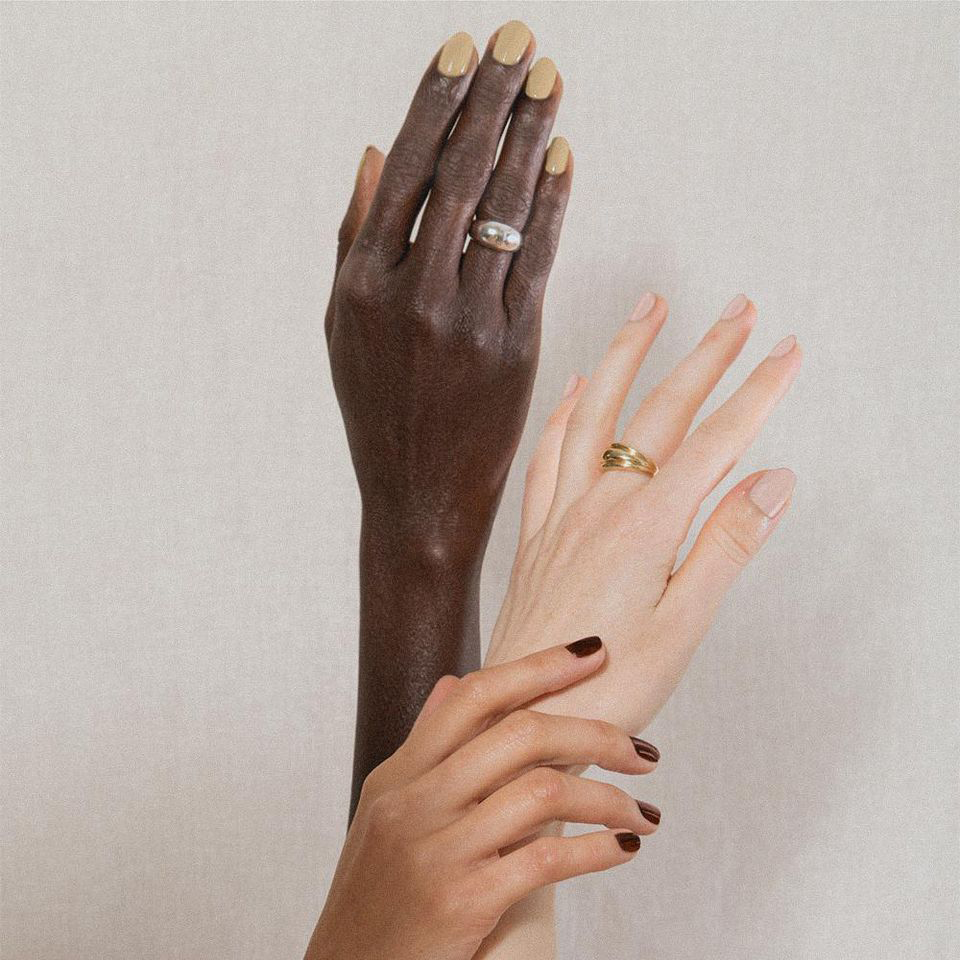As a recognized game changer in the organic skincare market specifically as a skincare brand that’s suitable for ALL skin types and ALL skin tones, I’m often asked ‘what’s the actual difference between different skin tones?’
And my answer is this: different skin tones age, pigment, blemish and scar differently.
Every skin type produces melanin, produced and controlled by the amino acid tyrosine in special cells called melanocytes, which is stimulated by sun exposure.
Skin tones that produce small quantities of melanocytes will have fair skin that may not tan easily. An inherited inability to produce melanin due to melanocytes being unable to produce the enzyme tyrosinase results in the skin condition we know as albinism.
So, the burning question is (drumroll please) – Do ethnically different skin types require completely different approaches to skin care?

The answer is, to some extent, yes. In the same way different Caucasian skin types vary in oil production, redness, dryness and proneness to acne, different skin tones may require varied levels of hydration and moisture
On closer analysis during my extensive research into skincare over the last 20+ years, I found that on closer inspection, there is very little difference between black, brown, red and white skin types. We all have the same skin colour – we just have different levels of the brown pigment melanin.
People of different races have the same amount of melanocytes, but they are more active in people with darker skin tones. One interesting common difference is that the oil glands tend to be larger in darker skin tones leaving it more prone to oiliness, though interestingly, less prone to acne.
The overall structures and functions of skin are very similar regardless of colour, meaning they can be cared for in similar ways, which is why I’m so passionate about reminding my lovely customers that frequent facials really are your secret weapon to complexion perfection. Knowing your skin’s unique strengths, weaknesses and specific requirements allows you to tailor your skincare approach to your skin-characteristics.
So, what’s the main difference between skin tones?
Black and Asian skin have thicker and tighter dermis than white skin, meaning black and Asian skin develop fewer facial lines and wrinkles, have a higher level of casual lipids and retain more moisture in the epidermis (stratum corneum) than white skin.
Additionally, black skin has 50% lower ceramides that white or Hispanic skin tones, whilst Asians have the highest ceramide levels. Ceramides are the fats that contribute most to skin hydration, and play a vital role in structuring and maintaining the water permeability barrier function of the skin. The higher level of casual lipids in black and Asian skin tones provide a barrier against the movement of water and electrolytes, retaining more moisture in the epidermis than white skin.
Why does black and Asian skin scar more easily?
Black skin sheds its outer layers at a higher rate (increased desquamation) than white skin, which is why black skin can sometimes appear ashy. The increased levels, size and multi-nucleated (two or more nuclei) fibroblasts in black and Asian skin is what causes black and Asian skin to be more prone to abnormal scarring and keloid formation.
Why do black and Asian skin tones show slower signs of ageing?
The epidermis of black skin contains thicker and stronger cells than white skin, and maintains more moisture. The increased desquamation (skin shedding) in black skin reveals more glowy skin rather than the dull and matt complexion often associated with white skin.
The epidermis of black skin contains 22 layers, where as white skin has only 17 layers, which is why fine lines and wrinkles are more visible in white skin. Black and oriental skin produces more sebum around the hair follicles resulting in more microbial flora and a lower pH (more acidic) skin, hence black and oriental skin’s ability to combat premature ageing due to oxidation as the skin is naturally more protected.
Asian skin is more prone to freckles, melasma and lentigenes, which is a sign the ageing process has begun in these skin tones.
‘’In ALL skin tones, sun exposure is the primary photodamage resulting in loss of skin structure and elasticity, and an increase in uneven brown or age spots.’’
We all love those glorious summer days and treasured jet-setter getaways, but the sun is also our skin’s biggest nemesis.
How does Asian skin differ?
The higher melanin levels in Asian skin, pigmentation and skin issues such as sun-induced melasma, post-inflammatory hyperpigmentation (PIH) and hyperpigmentation caused by acne are the primary skincare concerns in Asian skin, rather than the increased visible signs of aging in white skin.
Photoageing in terms of localized hyperpigmentation is far more common in Asian skin tones.
Although Asian skin maintains higher levels of water balance and lower levels of transepidermal water loss (TEWL), the epidermis in Asian skin is actually thinner and the lipid barrier more prone to breaking down, meaning Asian skin is more prone to sensitivity and mechanical stress from external and environmental factors. This is why it is so important for those of us with black and Asian skin to exfoliate more regular to minimize the appearance of large pores and even out our skin tone and texture.
Why is Asian and black skin more prone to eczema?
Skin complaints like eczema are referred to as mechanical stress. Using soaps or perfumes on Asian or black skin can lead to barrier break down which results in the irritation and redness associated with skin issues such as eczema.
Now that you’ve read this, you’ll understand why I’m so proud of the Antonia Burrell Holistic Skincare brand, and my multi-functional intelligent products being highly effective in nourishing, treating and perfecting the complexions of ALL skin types and All skin tones, How’s that for a little magic?
Cover Image Credit: J. Hannah Jewellery




